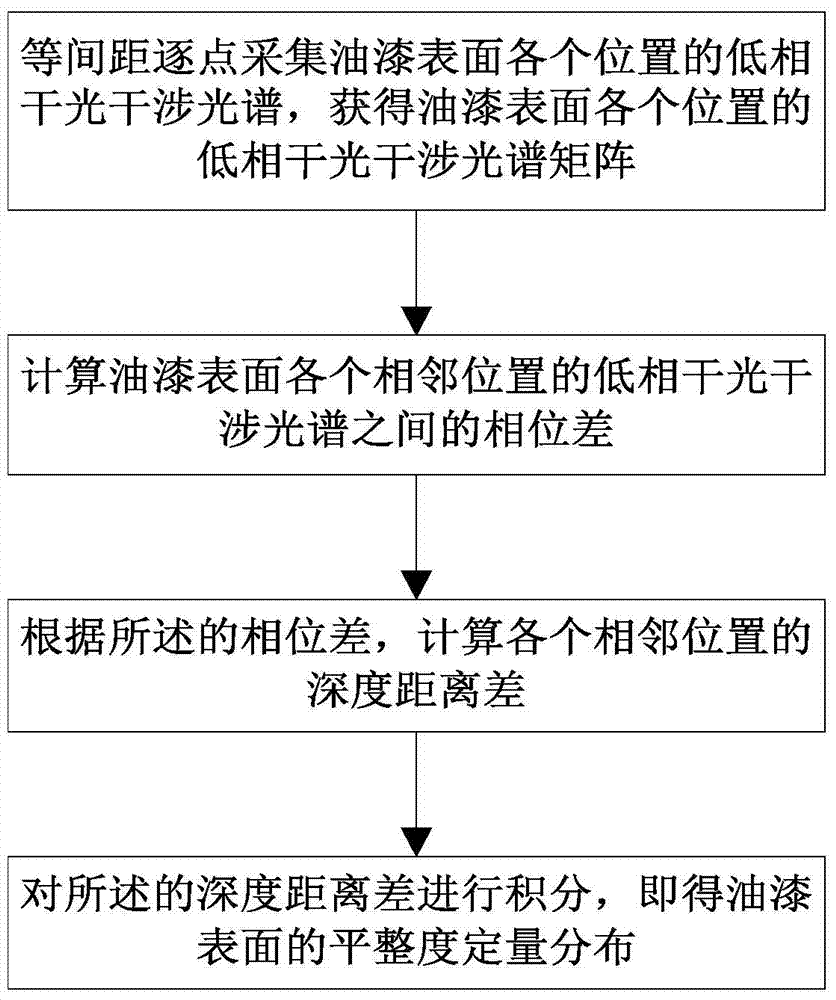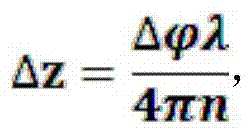Quantitative detection method and device for paint surface roughness
A quantitative detection method and surface smoothness technology, which is applied in the field of material surface flatness detection, can solve problems such as the inability to achieve quantitative detection
- Summary
- Abstract
- Description
- Claims
- Application Information
AI Technical Summary
Problems solved by technology
Method used
Image
Examples
Embodiment Construction
[0028] Embodiments of the present invention: a quantitative detection method for paint surface roughness, such as figure 1 shown, including the following steps:
[0029] S1, collect the low-coherent light interference spectrum of each position on the paint surface point by point at equal intervals, and obtain the low-coherence light interference spectrum matrix of each position on the paint surface;
[0030] S2, calculate the phase difference between the low-coherence light interference spectra of each adjacent position on the paint surface It specifically includes the following steps: performing Fourier transform on the low-coherent light interference spectrum at adjacent positions to obtain a corresponding complex exponential function; dividing the complex exponential function to obtain; wherein,
[0031] The interference spectrum of low-coherence light at position 1 is:
[0032] The interference spectrum of low-coherence light at position 2 is: In the formula, I 1 (...
PUM
 Login to View More
Login to View More Abstract
Description
Claims
Application Information
 Login to View More
Login to View More - R&D
- Intellectual Property
- Life Sciences
- Materials
- Tech Scout
- Unparalleled Data Quality
- Higher Quality Content
- 60% Fewer Hallucinations
Browse by: Latest US Patents, China's latest patents, Technical Efficacy Thesaurus, Application Domain, Technology Topic, Popular Technical Reports.
© 2025 PatSnap. All rights reserved.Legal|Privacy policy|Modern Slavery Act Transparency Statement|Sitemap|About US| Contact US: help@patsnap.com



